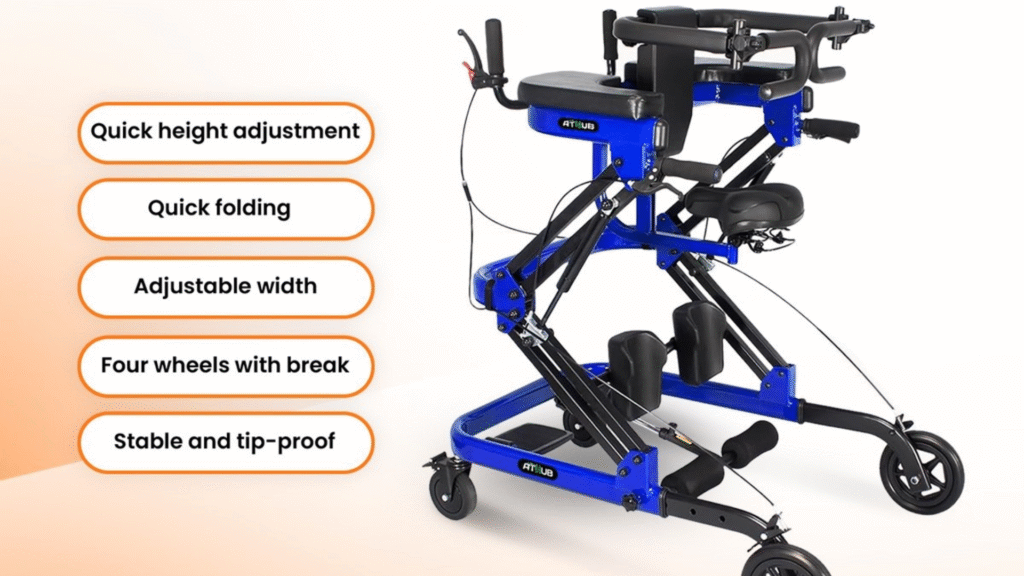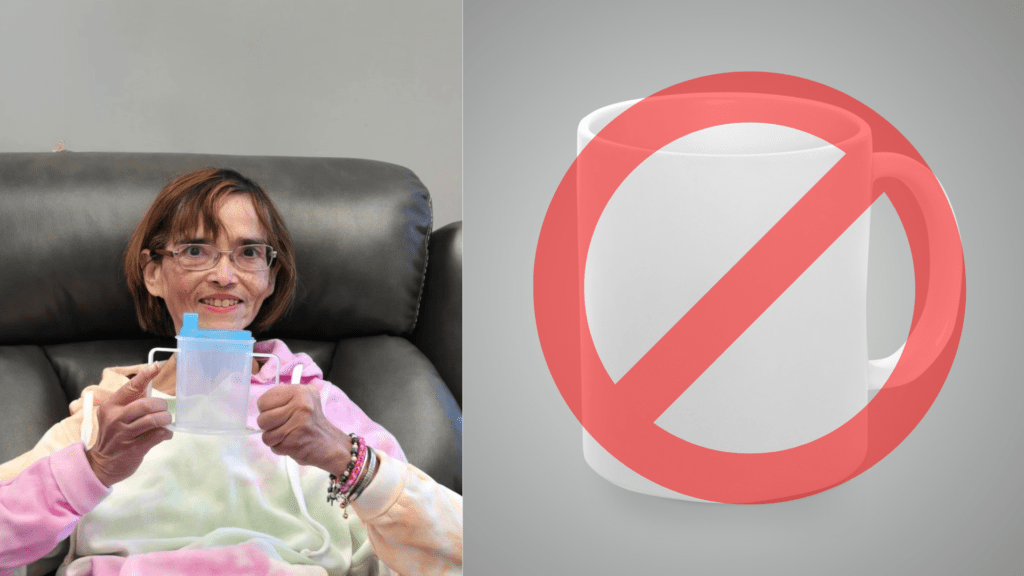Introduction: Supporting Children’s Mobility Through Gait Training
Mobility is an essential part of child development, and for children with physical disabilities or mobility challenges, achieving independence can require specialised support. Gait trainers are designed to help children strengthen muscles, improve balance, and gain confidence in walking.
Using a gait trainer can enhance a child’s participation in daily activities, therapy sessions, and social interactions. With the right guidance and equipment, children can achieve better mobility outcomes while families and carers are supported throughout the process.
What Is a Gait Trainer?
A gait trainer is a specialized mobility device designed for children who require support to walk safely. Unlike standard walkers, gait trainers provide adjustable support, improved posture alignment, and stability for children with developmental delays, cerebral palsy, or other mobility impairments.
Gait Trainer Walker Features
- Adjustable height and handlebar settings for growth and therapy needs
- Supportive harness or chest pad to maintain upright posture
- Smooth wheels and brakes for safe movement
- Customisable components for different therapy plans
Gait trainers are not just mobility aids—they are therapeutic devices that actively support physical development and rehabilitation.
Benefits of Gait Trainers for Children
Improved Mobility and Muscle Strength
Gait trainers allow children to practice walking while receiving support where needed. Regular use helps strengthen leg muscles, improve endurance, and build confidence in movement.
Support for Balance and Coordination
By providing postural support, gait trainers enable children to focus on coordination and balance, reducing the risk of falls and encouraging safe, independent steps.
Enhancing Independence and Social Participation
Children using gait trainers can engage more in play, school activities, and family routines. Improved mobility fosters independence, encourages social interaction, and promotes overall well-being.
Uses of Pediatric Gait Trainers in Therapy
Role in Physiotherapy and Occupational Therapy
Therapists use gait trainers to design exercises that improve strength, posture, and walking patterns. Devices can be adjusted to match the child’s abilities, gradually reducing support as mobility improves.
Use in Home Rehab vs. Clinical Settings
Gait trainers are suitable for both home and clinical use. At home, they provide daily practice in familiar surroundings, while in therapy sessions, they allow targeted exercises under professional supervision.
Adjustable Gait Trainers for Customised Therapy Plans
Adjustable gait trainers allow modifications in height, handle position, and support level. Customisation ensures therapy aligns with each child’s specific needs, providing maximum benefits over time.
For more details, see our Gait Trainer page.
NDIS and Funding Support in Australia
NDIS participants may be eligible for funding to access gait trainers and related mobility aids.
NDIS Gait Trainer Funding Process
Occupational therapists or physiotherapists usually provide recommendations based on the child’s needs. Families can submit funding requests through the NDIS portal to access devices.
Support Walkers for Hospital Discharge Rehab
Gait trainers are often prescribed for children transitioning from hospital care to home rehabilitation, ensuring continuity in therapy.
Role of Occupational Therapists in Equipment Recommendations
Therapists assess each child’s mobility requirements, recommend appropriate devices, and ensure proper fitting for safety and effectiveness.
For personalised NDIS advice, you can Contact Us.
Choosing the Right Gait Trainer for Your Child
Kids Gait Trainer vs. Adult Gait Trainer
Pediatric gait trainers are specifically designed for children’s size, weight, and therapy needs, unlike adult walkers, which may not provide adequate support or adjustability.
Factors: Adjustability, Safety, Therapist Input
Consider features such as height adjustment, harness support, wheel type, and therapist recommendations. Adjustable gait trainers ensure the device grows with your child and meets evolving therapy needs.
Explore our Store or submit a Product Enquiry to find the most suitable gait trainer.
Conclusion: Helping Children Thrive With the Right Mobility Support
Gait trainers are essential tools in supporting children with mobility challenges. They improve strength, balance, and independence, playing a vital role in therapy and daily life. NDIS funding makes these devices accessible to families, and consulting therapists ensures the right choice for long-term success.
Investing in a suitable gait trainer allows children to participate fully in activities, enhances their confidence, and supports their overall development.
FAQs
What is the difference between a standard walker and a gait trainer?
A gait trainer provides postural support, adjustability, and therapeutic benefits, while standard walkers mainly assist with basic walking.
Can I get NDIS funding for a gait trainer?
Yes, children eligible under NDIS can receive funding with a therapist recommendation. Funding covers purchase, adjustments, and accessories if required.
Are gait trainers suitable for home use?
Yes, adjustable pediatric gait trainers can be used safely at home and in therapy clinics to reinforce mobility practice.
How do therapists choose the right gait trainer?
Occupational or physiotherapists assess the child’s mobility, growth, and therapy needs to recommend size, adjustability, and support features.
Can gait trainers be used for children with cerebral palsy?
Yes, gait trainers are commonly prescribed for children with cerebral palsy to support balance, muscle strength, and safe walking practice.



